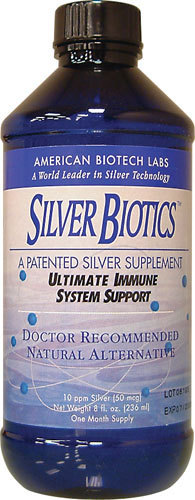SILVER BIOTICS
EditPlanning to Take Oral Antibiotics
-
Take only antibiotics specifically prescribed for you. The doctor chooses an antibiotic and the dosage based upon your state of health, your weight, and what microorganism(s) are causing your infection. This minimizes the risk of side effects. Do not take medication that has not been specifically prescribed for you and your medical condition.[3]
- Let your doctor determine the treatment plan. Infections can be caused by a variety of microorganisms such as bacteria, viruses, parasites, and fungi such as yeast. An antibiotic prescribed for a bacterial infection will not treat other types of infection.[4]
- Do not use an antibiotic prescribed for another person.
-
Tell your doctor and pharmacist about any other medications and supplements you are taking. Any drug, prescription, nonprescription, or alcohol, can interact with the antibiotic. This also includes supplements, natural or herbal remedies, and even multivitamins. The effectiveness of the antibiotic or your other medications may be compromised if you do not tell your doctor what else you’re taking.[5]
- You should also tell your doctor whether you have ever experienced any allergies to medication or other problems with medication, including antibiotics.
- Some antibiotics can cause your other medications to be metabolized slower or faster than usual. The antibiotic may cause a medicine to be absorbed into your system poorly. One of your medications could affect how the antibiotic is absorbed. Your current medications will influence what antibiotic the doctor chooses.[6]
- Certain antibiotics affect the way alcohol is broken down or metabolized in the body. This can lead to uncomfortable symptoms such as nausea, vomiting, and headache. You should not consume alcohol while using antibiotics.[7]
-
-
Read the label on the medicine bottle. Familiarize yourself with the prescribed dose (how much of the antibiotic you take each time) and frequency (how many times a day that dose is to be taken).
- Antibiotics come in a variety of forms: capsule, tablet, chewable tablet, or liquid. [8]The latter are more commonly prescribed in pediatrics for infants and children.
- Your dose could be one or two tablets/capsules each time, or the dosing could be irregular. For example, Zithromax is an antibiotic which requires you to take a double dose on the first day and a single dose on the remaining days.[9]
- Think about frequency in terms of a 24-hour period. Every 12 hours is the same as twice a day and 4 times a day is every six hours.
EditTaking the Oral Antibiotic
EditAddressing Any Side Effects
-
Tell your doctor if you develop any new symptoms while taking the antibiotic.Common side effects of antibiotics are stomach upset, vomiting, diarrhea, and vaginal infections.[25] Read the patient leaflet to know the specific side effects associated with your antibiotic. Talk to the doctor about the severity of your symptoms. She may decide to change the antibiotic.
- Stomach upset, diarrhea, vaginal infections, and thrush (white patches of yeast in the mouth) occur because the antibiotic kills the good or normal bacteria along with the bad.[26] These issues may need to be treated with other types of antibiotics or other medications. Your doctor may also suggest that you use a probiotic, such as those found in yogurt or dietary supplements, to help restore the “good” bacteria.
- Antibiotics can affect the kidneys, ears, liver, or the peripheral nerves (nerves not in the brain or spine). Tell your doctor if you have abdominal pain, ringing in your ears, or tingling.[27]
-
-
-
EditUsing an Antibiotic Cream
-
Clean minor wounds before applying creams. If you have a minor cut, scrape, or superficial burn, always clean it before applying any topical medication. Apply antibiotic cream to clean, dry skin.[33]
- For cuts and scrapes, wash your hands thoroughly. Rinse the wound with clear running water. You can wash the area around the wound with soap and water, but avoid getting soap in the wound as it will irritate your skin. Use fine-tipped tweezers to remove any debris.[34]
- For superficial burns, run cool water over the burned area for 10-15 minutes. Pat the area dry with a clean towel, but don’t rub or scrub, as you could break the skin or cause irritation.[35]
-
Apply an over-the-counter (OTC) antibiotic cream or ointment to minor cuts and scrapes. Antibiotic creams have not been shown to help minor wounds heal faster (despite any claims to the contrary). However, they can help keep infection at bay by creating a barrier between your wound and the environment, making it harder for germs to get into the cut or scrape.[36]
- Apply only a thin layer. The cream or ointment will also help keep the bandage from sticking to your cut or scrape.[37]
- Common OTC antibiotic creams include polymyxin B sulfate (Polysporin), bacitracin, and triple antibiotic ointment (Neosporin).
- If you develop a rash while using an OTC antibiotic cream, stop using it.
- Do not apply an OTC antibiotic cream to very deep or large cuts, puncture wounds, animal bites, or serious burns. Seek medical assistance.[38]
-
-





















No comments:
Post a Comment